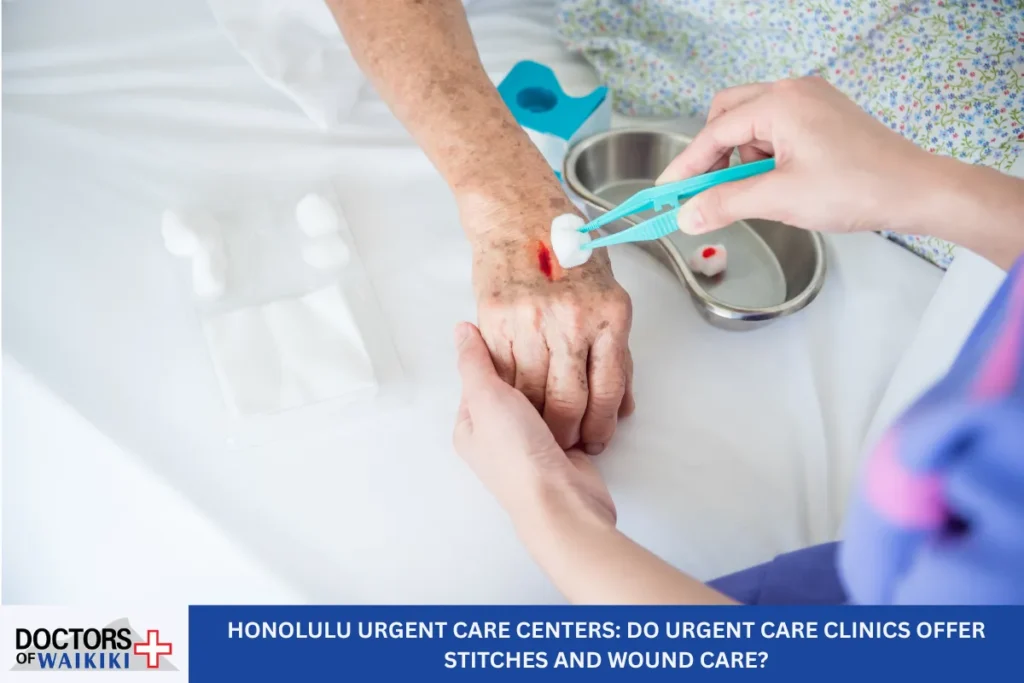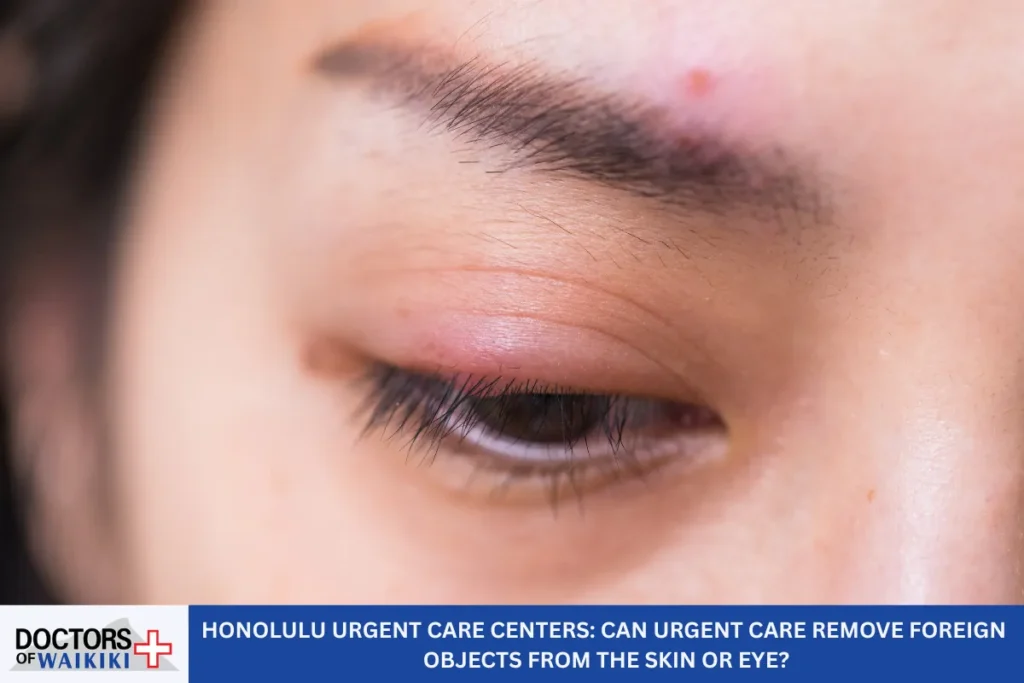Living in Honolulu, Hawaii, doesn’t make anyone immune to pain. From everyday strain and injuries to long-term health conditions, pain can interfere with sleep, movement, and quality of life. Pain management offers real solutions by identifying the source of pain and providing treatments that restore comfort and function.
Knowing when to see a specialist is important. Delaying care can exacerbate the problem and make it harder to treat. This guide covers what pain management is, the types of pain it treats, and clear signs that it’s time to seek expert help in Honolulu.
What Is Pain Management?

Pain management refers to a comprehensive approach to treating pain, aiming not only to mask symptoms but also to identify and address the underlying causes. It involves a range of medical and non-medical treatments designed to enhance physical function and improve quality of life.
This field goes beyond the use of medications. A pain management plan may include:
- Lifestyle adjustments
- Physical therapy
- Psychological support
- Minimally invasive procedures
- Advanced diagnostic tools
- Nutritional guidance
Pain can be acute (short-term), such as after an injury or surgery, or chronic (long-lasting), such as in the case of arthritis or nerve damage. Chronic pain, in particular, can lead to emotional distress, social withdrawal, and reduced mobility if not addressed properly. Pain management specialists aim to treat the whole person, not just the symptoms.
In Honolulu, pain management is particularly valuable due to the city’s physically active culture, varied working environments, and large aging population. From athletes and outdoor enthusiasts to office workers and retirees, many individuals here benefit from personalized treatment plans tailored to their needs.
What Does a Pain Management Specialist Do?

A pain management specialist is a medical professional—usually a physician—who has received advanced training in evaluating, diagnosing, and treating pain using an interdisciplinary approach. Their goal is to help patients regain function, reduce reliance on medication, and improve their overall quality of life.
Here’s a closer look at what they do:
- Thorough Assessments: Specialists begin by listening to your story. They take a detailed medical history, assess symptoms, review previous tests, and understand how pain affects your daily life.
- Customized Diagnosis: They may utilize various diagnostic tools, including X-rays, MRIs, CT scans, nerve conduction studies, or blood tests, to pinpoint the source of the pain.
- Integrated Treatment Plans: Based on their findings, they create a personalized plan that may include physical therapy, injections, nerve blocks, medications, or referrals to other specialists.
- Ongoing Monitoring: Pain management is not a “one-and-done” visit. Specialists follow up regularly to adjust treatments and track your progress.
These experts often collaborate with orthopedic surgeons, neurologists, physical therapists, and psychologists to provide comprehensive care.
Types of Pain Commonly Treated in Honolulu

Pain specialists in Honolulu are familiar with a wide range of conditions, many of which are connected to the island’s active lifestyle, workplace conditions, and healthcare needs. Let’s explore some of the most common types of pain treated by local experts.
Back and Neck Pain
Back and neck pain are among the most frequently reported complaints. They can result from poor posture, heavy lifting, prolonged sitting, or injuries sustained during physical activity.
- Causes: Herniated discs, spinal stenosis, muscle strains, arthritis, and poor ergonomic setups.
- Symptoms: Dull aches, sharp shooting pain, stiffness, or tingling sensations in limbs.
- Treatment Options: May include spinal injections, physical therapy, manual manipulation, traction therapy, and core strengthening exercises.
In Honolulu, many residents and workers develop back issues due to activities such as surfing, construction work, or long commutes to work. Early intervention is crucial in preventing chronic problems.
Joint Pain
Joint pain affects millions of people and can significantly interfere with daily tasks, such as walking, climbing stairs, or bending.
- Common Joints Affected: Knees, hips, shoulders, elbows, and wrists.
- Causes: Osteoarthritis, rheumatoid arthritis, bursitis, injuries, or repetitive motion.
- Symptoms: Swelling, stiffness, tenderness, or grinding sensations.
Honolulu’s active residents—whether hiking up Diamond Head or dancing hula—often experience joint overuse. Pain specialists help manage these symptoms through joint injections, anti-inflammatory medications, and guided exercise programs.
Nerve Pain
Nerve pain, also known as neuropathic pain, originates from damage or dysfunction within the nervous system. It is often more complex than muscle or joint pain and requires specialized treatment.
- Common causes include sciatica, diabetic neuropathy, herniated discs that press on nerves, carpal tunnel syndrome, and post-herpetic neuralgia (a condition that develops after shingles).
- Symptoms: Burning, tingling, numbness, electric-shock sensations, or hypersensitivity to touch.
Pain management strategies may involve nerve blocks, electrical stimulation, anti-seizure medications, and targeted therapy to reduce nerve irritation.
Headaches and Migraines
Recurring headaches and migraines can become debilitating. While occasional tension headaches are common, frequent or severe headaches may signal an underlying problem.
- Types: Tension headaches, migraines, cluster headaches, and cervicogenic headaches (from neck problems).
- Causes: Stress, neck strain, hormonal changes, sleep issues, or neurological imbalances.
- Treatment: Includes medication, physical therapy, nerve blocks, and relaxation techniques.
In Honolulu’s warm climate, dehydration and sun exposure can also trigger headaches, which pain specialists take into account when designing a care plan.
Post-Surgical Pain
After surgery, some individuals continue to experience discomfort long after their wounds have healed. This is known as post-surgical or chronic post-operative pain.
- Common Surgeries Involved: Back surgery, joint replacement, abdominal surgery.
- Symptoms: Ongoing soreness, sharp pain, sensitivity near the incision site.
- Treatment options include scar tissue mobilization, nerve injections, targeted rehabilitation, and desensitization techniques.
Pain specialists work closely with surgeons to ensure patients don’t suffer unnecessarily during recovery.
Sports and Activity-Related Pain
Honolulu’s residents and tourists enjoy an active lifestyle, which, while healthy, can sometimes lead to injury or repetitive strain.
- Common Injuries: Rotator cuff tears, ACL strains, plantar fasciitis, shin splints, and overuse injuries.
- Symptoms: Sudden sharp pain, chronic tightness, instability, or swelling.
- Treatment: Rest, structured rehabilitation programs, bracing, and strengthening routines tailored to recovery.
Specialists ensure you return to your sport safely, avoiding reinjury.
Signs That It’s Time to See a Pain Management Specialist

Some people wait too long before seeking expert help, believing their pain will eventually go away. While mild pain can improve with rest and self-care, certain signs should never be ignored:
The Pain Has Lasted More Than a Few Weeks
If you’ve been in pain for over three or four weeks and it’s not improving, it’s time to seek medical advice. Chronic pain can become more complex and difficult to treat the longer it’s left unaddressed.
Your Pain Is Getting Worse
Pain that increases in intensity or spreads to other parts of the body is a significant warning sign. It may indicate underlying issues, such as nerve compression, joint degeneration, or soft tissue damage, that require prompt care.
You’re Relying Too Much on Medication
Suppose you’re taking over-the-counter medications regularly or find yourself needing stronger prescriptions to function. In that case, a pain management specialist can offer safer alternatives that target the root cause rather than masking symptoms.
It’s Impacting Your Life
Pain that prevents you from working, sleeping, moving around, or enjoying your favorite activities is a clear indication that it’s time to consult a professional. Life in Honolulu is meant to be active and vibrant—don’t let pain take that away.
You’ve Had an Injury or Surgery
Post-injury and post-surgery pain can be managed more effectively when addressed early. Ignoring it may lead to long-term complications and reduced mobility.
What to Expect at Your First Appointment
Visiting a pain management specialist is the first step toward recovery and relief. Here’s how the process typically goes:
- Detailed History: You’ll be asked about the type of pain you’re experiencing, how long it has lasted, what makes it better or worse, and how it affects your life.
- Physical Exam: The specialist will examine the affected area, assess your range of motion, and evaluate your posture and muscle tone.
- Diagnostic Testing: If needed, they may request imaging or nerve studies to get a clearer view of the problem.
- Treatment Planning: Based on their findings, you’ll receive a tailored care plan. This could include medications, physical therapy, injections, or even minor procedures.
The goal is to reduce pain while helping you regain your strength, movement, and confidence.
Benefits of Early Pain Management

Starting pain treatment early provides many advantages. It helps prevent further complications, speeds up recovery, and minimizes the risk of developing long-term problems.
Here are a few key benefits:
- Faster Relief: You don’t have to wait months for the pain to fade on its own.
- Improved Functionality: Early care helps you return to work, hobbies, and everyday life sooner.
- Fewer Medications Needed: Many non-drug treatments work well, reducing the need for strong painkillers.
- Emotional Wellbeing: Living with pain can lead to anxiety and depression. Getting help early prevents this cycle.
Pain that lingers doesn’t just affect your body—it affects your mood, energy, and overall well-being. Early intervention can restore balance to your life.
Choosing the Right Specialist in Honolulu
Not all doctors are the same, and finding the right fit is crucial. Look for someone who:
- Has experience treating your specific condition
- Takes time to explain options and answer questions
- Offers multiple treatment approaches, not just prescriptions
- Provides consistent follow-up care
- Respects your lifestyle and goals
In Honolulu, pain management services should be convenient, accessible, and suited to the island’s unique pace of life.
Honolulu Pain Management – Doctors of Waikiki

Looking for pain management care in Honolulu? Doctors of Waikiki is your trusted walk-in clinic offering reliable and modern solutions to help you feel better. Whether you’re dealing with back pain, joint aches, post-injury discomfort, or long-term conditions, our team is here to support your recovery.
We’re open 7 days a week, and our staff speaks multiple languages, ensuring clear communication for all patients. We also offer immigration medical exams, general checkups, minor procedures, and urgent care services. Call us today at (808) 922-2112 or visit us in person. Let’s take the first step toward a pain-free life—together!
Frequently Asked Questions About Pain Management in Honolulu
What is pain management, and how does it work?
Pain management is a specialized area of medicine that focuses on diagnosing and treating various forms of pain, whether acute or chronic. It employs a wide range of methods to alleviate discomfort and enhance physical function, enabling patients to resume their daily routines with greater ease.
Treatment options can include:
- Medication
- Physical therapy
- Interventional procedures like trigger point injections
- Lifestyle modifications
- Psychological support
A pain management specialist evaluates the root cause of the issue, which may involve musculoskeletal pain, spine injuries, or low back pain. Depending on your condition, they may recommend non-surgical treatments, such as spinal manipulation or spinal mobilization, to alleviate tension and restore mobility.
The goal is not only symptom relief but also long-term recovery and an improved quality of life. In Honolulu, pain specialists often take a well-rounded approach that reflects the active lifestyle and needs of the local community.
When should I see a pain management specialist?
Seeing a pain management specialist is recommended when pain persists for more than a few weeks, especially if it interferes with daily life. People often delay care, thinking the pain will resolve on its own. Still, untreated pain can develop into chronic pain, making it more difficult to treat effectively.
You should consider visiting a specialist if you experience:
- Constant or recurring low back pain
- Discomfort due to muscle spasms or stiffness
- Difficulty sleeping or moving due to pain
- A history of spine injuries or joint problems
- Little to no relief from over-the-counter medication
Specialists can provide therapies like trigger point injections to relieve tight muscles or explore manual therapies like spinal manipulation. These treatments are especially helpful for conditions related to musculoskeletal pain, helping restore movement and reduce inflammation.
Early intervention increases the chances of recovery and helps prevent the development of long-term complications.
What are trigger point injections, and when are they used?
Trigger point injections are a common treatment used in pain management to address tight areas within muscle tissue that cause pain and stiffness. These tight spots, known as trigger points, can develop from overuse, tension, or injury. They often contribute to muscle spasms, low back pain, or musculoskeletal pain that radiates to other parts of the body.
Here’s how the procedure works:
- A healthcare provider inserts a small needle directly into the trigger point
- A local anesthetic or corticosteroid is injected
- The injection reduces inflammation and allows the muscle to relax
Trigger point therapy is especially useful for treating pain that doesn’t respond to stretching or physical therapy alone. It’s commonly used for people dealing with chronic tension, fibromyalgia, spine injuries, or poor posture that leads to muscular imbalances.
In Honolulu, many active individuals and workers benefit from this non-invasive procedure as part of a broader pain management plan.
What is the difference between spinal mobilization and spinal manipulation?
Both spinal mobilization and spinal manipulation are hands-on techniques used by physical therapists and chiropractors to treat pain, especially low back pain and spine injuries. Though they are often grouped, there are key differences in technique and application.
Spinal Manipulation:
- Involves high-velocity, low-amplitude thrusts
- Produces audible joint “pops” or cavitation
- Often used to restore movement and reduce joint restriction
- Commonly associated with chiropractic care
Spinal Mobilization:
- Uses slower, gentler movements within a joint’s range of motion
- No popping sounds involved
- Typically preferred for elderly patients or those with fragile bones
- Focuses on improving mobility without forceful thrusts
Both techniques can help manage musculoskeletal pain, stiffness, and chronic pain without surgery. They may be combined with other pain management tools, such as exercise, trigger point injections, or muscle relaxation therapy, especially in personalized plans developed by a pain management specialist. Read more: How Pain Management in Honolulu Clinics Use Shock Wave Therapy to Treat Tendonitis, Plantar Fasciitis, and Joint Pain











